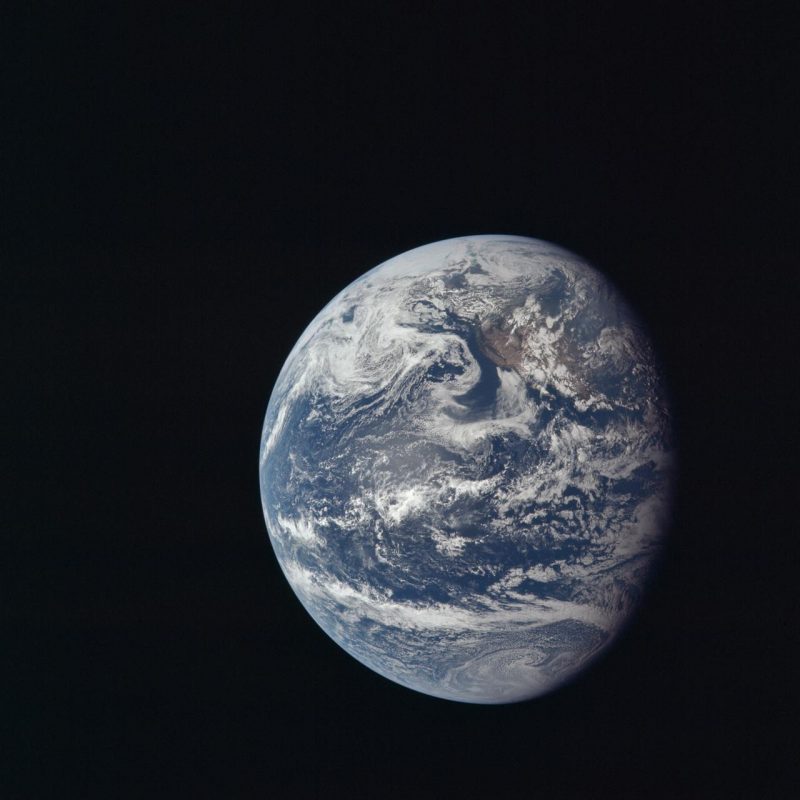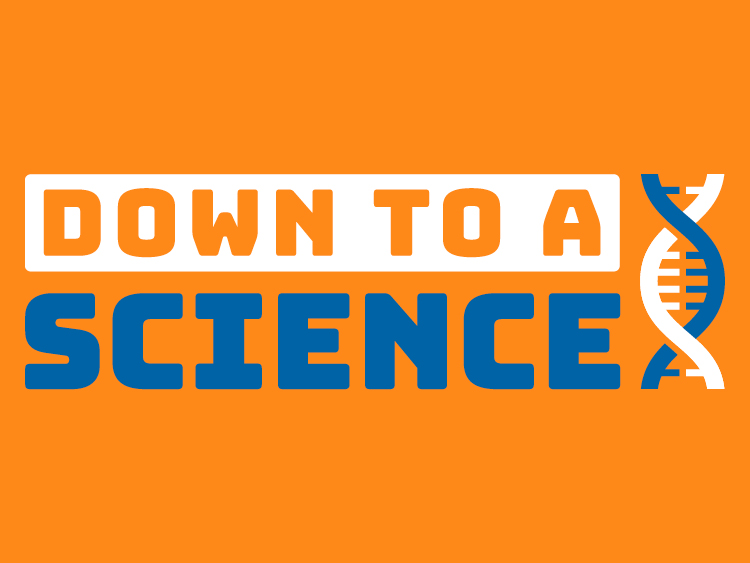
16 July 1969 — This view of Earth was photographed from the Apollo 11 spacecraft during its translunar journey toward the moon while about 10,000 nautical miles from Earth. // Image courtesy of NASA
“Climate Action” is the theme of Earth Day 2020, but first, let’s hop in our time machines to see what the very first Earth Day was like. What was the catalyst for Earth Day? Who came up with it? What did people do to mark it throughout Connecticut?
25 Facts About Earth Day:
-
- The first Earth Day took place on April 22, 1970. Today we celebrate 50 years of Earth Day!
- Earth Day was not always known as Earth Day. Initially, it was also referred to as Ecology Day, Ecology Drive, Environment Day, and E-Day in news accounts of the actions across the United States.
- Senator Gaylord Nelson of Wisconsin announced the concept of Earth Day in the autumn of 1969, not long after visiting the massive Santa Barbara oil spill. At the time, this was the largest oil spill in U.S. history; over 50 years later, it is ranked as the third largest. This was not the only ecological disaster of the time. Ohio’s Cuyahoga River had been so polluted by industrial waste that it caught fire at least ten times since 1868, with its 1969 spontaneous combustion gaining widespread attention.
- This was not Sen. Nelson’s first attempt at rallying people around the issue of habitat preservation. Seven years prior, he convinced President Kennedy to go on a “conservation tour.”
- Senator Nelson, on the opening day of Session in January 1970, gave a speech about the “great awakening underway” regarding pollution.
- How was the date of April 22nd chosen? At the time, college students were especially engaged in social activism. To allow as many adult students as possible to participate, Earth Day was planned for the time between Spring Break and final exams.
- According to the Environmental Protection Agency, which itself developed a few months later in 1970, over 20 million Americans participated in the first Earth Day. At that time, organizing meant much more than getting on Twitter or sending out a few emails!
- This was the largest demonstration in U.S. history.
- Over 1,500 college campuses participated in Earth Day!
- Because a number of public schools (k-12) in Connecticut were closed for Spring Vacation on April 22, many marked the occasion in advance by having teach-ins, litter clean ups, poster making activities, and more.
- Our state’s then Governor Dempsey’s “Keep Connecticut Beautiful Committee” officially endorsed the Earth Day activities that were planned on campuses and in communities state- and nationwide.
- The Hartford Courant compiled what they called a “free list of resources about man’s environment” for schools to use, by request.
- Canton’s Roaring Brook Nature Center held a teach-in to educate about foraging and canning wild fruits.
- Merle S. Bugbee, the First Selectman of Old Lyme, was reported by the Hartford Courant as saying that “no issue demands greater ‘sense of urgency’ than our environment and called it an issue fundamental to human survival.”
- At least one town in Connecticut passed an anti-litter ordinance at this time.
- Locally, the University of Hartford scheduled activities for what they called the “National Teach-In on the Environment.” This included a panel discussion featuring someone who was described as a “crusader against transport pollution.” There were lectures on pesticide use, waste disposal, and noise pollution, along with film screenings. Beside the Park River that flows through campus, some students joined in an “all night ecology camp-out.” Trinity College students, in downtown Hartford, distributed 1,000 balloons bearing the message “This is the only clean air you can breathe.”
- How did Groton participate? They hosted a survival workshop and offered excursions in a tugboat.
- Eastern Connecticut State University (then known as Eastern Connecticut State College) arranged for Isaac Asimov to visit campus and give a talk on “The Nature of Man.”
- An estimated 100,000 people, including Paul Newman and Ali MacGraw, rallied in New York’s Union Square Park that day.
- Outside of our fine state, there were too many actions to name, but one I can’t resist mentioning occurred in our neighbor to the west. New York’s Mayor John Lindsay made 45 blocks of Manhattan’s Fifth Avenue car-free for two hours on Earth Day, saying that “unquestionably incineration, and automobiles are the biggest contributors to pollution.” Additionally, automobiles were banned for the day from Central Park, Prospect Park, Silver Lake Park, and Forest Park in New York City.
- Mayor Lindsay could be described as ahead of his time, but the Active Conservation Tactics group at Berkeley pushed for “lower tolls for cars with four or more passengers as an incentive for car pools,” wrote the New York Times. There were actions in Providence, Rhode Island meant to promote carpooling.
- Down in New Haven, an audience of 200 students, mostly from Yale, took part in and watched what the Hartford Courant described as a mock trial of a “1952 model car,” which ultimately got “convicted of ‘murder of plant, animal and human life by willful emission of noxious pollutants.’” Its punishment? Getting destroyed by sledgehammers.
- About one week before Earth Day, its founder, Sen. Nelson, along with former Interior Secretary Stewart Udall, led a discussion at Yale’s School of Forestry, as a preview of the national teach-in.
- In what may seem unbelievable today, part of that first Earth Day was a mass phone-in to industrial polluters.
- Greta Thunberg’s zero-carbon voyage from Europe to the United States rightfully garnered much attention last summer, but in 1970, an American used slow transportation to travel for environmental activism. Singer Pete Seeger sailed from New York to D.C. for Earth Day. Pete’s trip was shorter than Greta’s, but cool nonetheless!
What is the legacy of Earth Day 1970?
According to the EPA, “Public opinion polls indicate that a permanent change in national priorities followed Earth Day 1970. When polled in May 1971, 25 percent of the U.S. public declared protecting the environment to be an important goal, a 2,500 percent increase over 1969.” That first Earth Day kicked off a series of actions, including the creation of the EPA, and passage of laws like the Clean Air and Clean Water Acts.
25 Ways You Can Celebrate Earth Day:
- Get outside and see how many items you can find in the Spring is Here Backyard Scavenger Hunt.
- Try the #21DayEarthChallenge
- Replace single-use plastic water with a robust, sustainable container and ask your office to also eliminate these throwaways. Today we have drinking fountains that double as bottle refill stations, offering an excellent solution so staff and visitors remain hydrated without creating unnecessary waste.
- Plant a tree. Can’t do this in your own yard? Donate to an organization like Arbor Day Foundation or KNOX Hartford.
- Use the power of the sun and some simple materials you already have in your home to create Solar Artwork or a Solar Oven. Watch this Science Sunday to learn how.
- Get inspired by those who are taking action in Hartford and beyond.
- Learn about the Connecticut River Conservancy and volunteer in the Source to Sea Cleanup next September!
- Watch movies that inspire you and explore the beauty of Earth and those animals who call Earth home. For some movie resources to get you started, click here.
- Reduce shipping-related impacts by eating food that is in season, regionally. Also, in an age of online shopping, try to batch your orders to avoid excess packaging and trips.
- When shopping, support companies that will take back and recycle their products.
- Make a Homemade Bird Feeder and hang it up where you can see it from your window! You can curl up with a snack and a bird guide and see who is visiting your yard.
- Build or buy a compost bin, or if you do not have the space, subscribe to a collection service.
- Explore National Parks, and other national treasures with a Virtual Field Trip.
- Rethink your shopping habits entirely. See if a neighbor is seeking to get rid of something that you want or need. Next time you want a rake or pair of candles, check with friends on social media or use Freecycle.
- If you have a garden or lawn, install a rain barrel. Hartford residents can even get these at no cost.
- What’s in your garden? Opt for native plants when planting your garden this spring. If you are looking to attract butterflies to your garden this summer, check out this list of plants that will help you do just that.
- Learn about these Connecticut native animals that you could find in your adventures outside this spring and summer.
- Are you a coffee lover? Look for Bird Friendly coffee, and of course, stay away from those single serving, single-use pods.
- Cut waste by learning how to cook. You won’t have a trash bin filled with TV dinner trays, and besides, basic life skills are good to have.
- Tend to eat one type of food often? Check out the bulk bins in your grocery store. If you know you make rice and beans every week, it makes no sense to only purchase small packages — especially if you live in something larger than a studio apartment. There is even an app to help you find stores with bulk bins in your area.
- Before going on a Spring Cleaning frenzy, figure out the smart way to dispose of items. RecycleCT can tell you the best way to get rid of anything from spray paint to fluorescent bulbs.
- Shop your local farmers’ market or join a CSA to reduce food miles.
- If you eat fish, peruse Monterey Bay Aquarium’s Seafood Watch consumer guide to learn which seafood to avoid.
- Spend time enjoying the outdoors. Visit Connecticut’s State Parks, the many land trusts, or even your local town or city parks.
- Participate in Citizen Science projects going on around the state and around the country. Some examples are NestWatch, Project FeederWatch, and Zooniverse. Descriptions of these citizen science projects and links to their website can be found here.
For more ideas of virtual events going on around Hartford this week, and for other ways you can celebrate at home, visit the Office of Sustainability website.
The best way to celebrate Earth Day is simple, get outside and enjoy the beauty that is our planet. What will you do from our list above? Share you pictures with us on social media by using the #ScienceAtPlay and tagging @CTScienceCenter.

Kerri Provost loves being outdoors whenever possible and is currently attempting to walk every block of Hartford. Because the world is endlessly interesting and amazing, Kerri enjoys taking a multidisciplinary approach, making connections between science, history, and more. She is the co-producer of Going/Steady, a podcast about exploring in the Land of Steady Habits and beyond.



